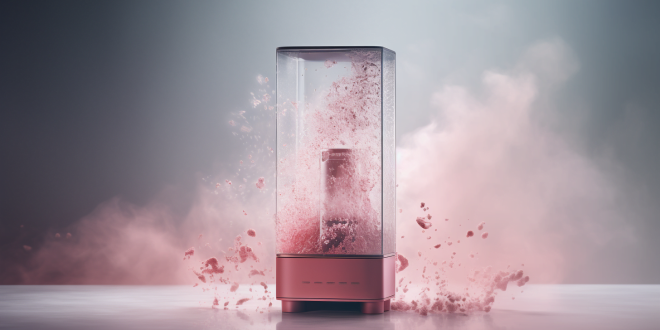Humidifiers are essential appliances for maintaining a comfortable indoor environment, especially during dry winter months. They add moisture to the air, helping to alleviate dry skin, sore throats, and other discomforts associated with low humidity. However, while these devices offer numerous benefits, they can also pose an unexpected threat: the growth of pink mold.
Pink mold, scientifically known as Aureobasidium pullulans, is a type of yeast-like fungus that can thrive in the damp conditions created by humidifiers. It not only looks unsightly but can also lead to health concerns if left unchecked. In this article, we will explore the causes of Pink Mold in Humidifiers and provide solutions to prevent its growth and ensure a healthier living environment.
Causes of Pink Mold in Humidifiers
Understanding the causes of pink mold growth in humidifiers is crucial for preventing its occurrence. Several factors contribute to the development of this pesky problem:
- Humidity Levels: The primary cause of pink mold in humidifiers is the high humidity environment they create. As humidifiers release moisture into the air, they raise the humidity levels in the room. While this can be beneficial for comfort, it can also create conditions that are ideal for mold growth.
- Water Quality: The quality of the water used in the humidifier plays a significant role in mold development. Tap water may contain minerals, chlorine, and other impurities that can encourage mold growth. It’s essential to use distilled or demineralized water to minimize these contaminants.
- Lack of Cleaning: Regular cleaning and maintenance of your humidifier are essential for preventing pink mold. If the appliance is not cleaned properly and regularly, bacteria and mold spores can accumulate, leading to the development of pink mold.
- Poor Ventilation: Insufficient ventilation in the room where the humidifier is used can exacerbate the mold problem. Stagnant air allows moisture to accumulate, creating an environment conducive to mold growth.
- Warm Temperatures: Pink mold tends to thrive in relatively warm temperatures. If the room where your humidifier is located is kept warm, it can promote the growth of this mold.
Health Concerns Associated with Pink Mold
While pink mold may appear harmless, it can pose health risks, especially for individuals with compromised immune systems, respiratory issues, or allergies. Some potential health concerns associated with exposure to pink mold include:
- Respiratory Issues: Inhaling airborne mold spores can trigger or exacerbate respiratory problems such as asthma and allergies. Individuals with compromised lung function are particularly vulnerable.
- Skin Irritation: Contact with pink mold can lead to skin irritation, including itching and rashes. This can be especially troublesome for those with sensitive skin.
- Eye Irritation: Mold spores in the air can also irritate the eyes, causing redness, itching, and discomfort.
- Sinus Infections: Prolonged exposure to pink mold can increase the risk of sinus infections, especially in individuals with weakened immune systems.
Solutions to Prevent Pink Mold Growth
Preventing pink mold growth in your humidifier is crucial for maintaining a healthy indoor environment. Here are some effective solutions to help you avoid this hidden threat:
Use Distilled Water:
To minimize the presence of minerals and impurities that encourage mold growth, use distilled or demineralized water in your humidifier.
Regular Cleaning:
Clean your humidifier at least once a week. Disassemble the components and wash them with warm, soapy water. Be sure to rinse thoroughly to remove any soap residue. Additionally, follow the manufacturer’s cleaning instructions provided in the user manual.
Change Filters:
If your humidifier has a filter, replace it regularly according to the manufacturer’s recommendations. A clean filter helps trap mold spores and prevents them from being released into the air.
Proper Ventilation:
Ensure good ventilation in the room where the humidifier is placed. Use exhaust fans or open windows when possible to maintain proper airflow and reduce humidity levels.
Maintain Humidity Levels:
Monitor the humidity levels in your home using a hygrometer. Aim for a comfortable humidity range of around 30-50%. Adjust the humidifier settings accordingly to avoid excessive moisture in the air.
Store the Humidifier Properly:
When not in use, store the humidifier in a dry place, preferably after thoroughly cleaning and drying it. This prevents the growth of mold and bacteria in the water tank and other components.
Regular Inspection:
Periodically inspect your humidifier for any signs of mold or algae growth. If you notice any, take immediate action to clean and disinfect the affected parts.
UV–C Light Technology:
Consider using a humidifier equipped with UV-C light technology. This feature helps kill bacteria and mold spores, reducing the risk of pink mold growth.
Replace Old Humidifiers:
If your humidifier is old and has been prone to mold problems, it may be time to invest in a new one with better maintenance features and technology to prevent mold growth.
In conclusion,
while humidifiers offer significant benefits in improving indoor air quality and comfort, they can also harbor the hidden threat of pink mold if not properly maintained. By following the preventive measures outlined in this article, you can ensure that your humidifier remains a source of health and well-being rather than a potential health hazard. Regular cleaning, proper water usage, and adequate ventilation are key to keeping pink mold at bay and enjoying the benefits of a comfortable and healthy home environment.
 Blogging World Tech
Blogging World Tech

